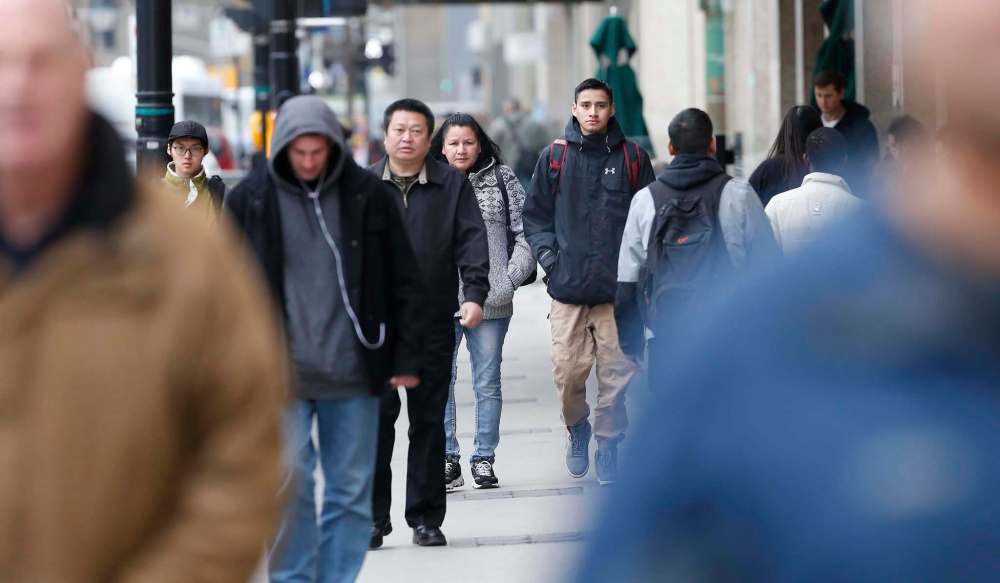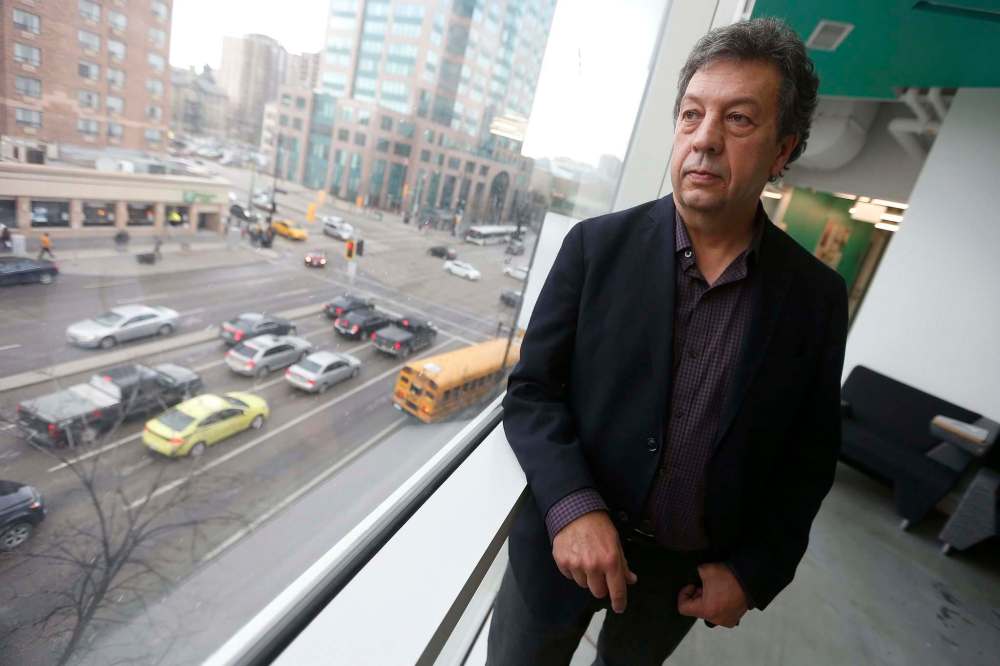Manitoba may be first majority non-white province in recent Canadian history
Advertisement
Read this article for free:
or
Already have an account? Log in here »
To continue reading, please subscribe:
Monthly Digital Subscription
$0 for the first 4 weeks*
- Enjoy unlimited reading on winnipegfreepress.com
- Read the E-Edition, our digital replica newspaper
- Access News Break, our award-winning app
- Play interactive puzzles
*No charge for 4 weeks then price increases to the regular rate of $19.00 plus GST every four weeks. Offer available to new and qualified returning subscribers only. Cancel any time.
Monthly Digital Subscription
$4.75/week*
- Enjoy unlimited reading on winnipegfreepress.com
- Read the E-Edition, our digital replica newspaper
- Access News Break, our award-winning app
- Play interactive puzzles
*Billed as $19 plus GST every four weeks. Cancel any time.
To continue reading, please subscribe:
Add Free Press access to your Brandon Sun subscription for only an additional
$1 for the first 4 weeks*
*Your next subscription payment will increase by $1.00 and you will be charged $16.99 plus GST for four weeks. After four weeks, your payment will increase to $23.99 plus GST every four weeks.
Read unlimited articles for free today:
or
Already have an account? Log in here »
Hey there, time traveller!
This article was published 30/10/2017 (2953 days ago), so information in it may no longer be current.
OTTAWA — Manitoba could be the first majority non-white province in recent history, according to a University of Winnipeg economist, who says Ottawa needs to step up in order for cities and provinces to maintain successful integration.
Philippe Cyrenne said census data released last week fall in line with trends observed over the past 15 years, with a high fertility rate among Indigenous people compared with Caucasians, and large amounts of immigration.
“If you look at, over time, those numbers will be getting bigger,” said Philippe Cyrenne. “So you have to have long-term thinking.”
The data tied Manitoba and British Columbia as provinces with the lowest percentage of Caucasians. In May 2016, 63 per cent of respondents self-identified as Caucasian, meaning they were neither a visible minority nor Indigenous.
From 2006 to 2016, the percentage of Caucasians declined by 4.2 per cent in Manitoba, slightly less than Nova Scotia’s 4.7 per cent change. Meanwhile, the number of those identifying as Indigenous increased by 28 per cent.
The number of visual-minority Manitobans almost doubled in that time period. The census also showed of all Canadian cities, Winnipeg had the second-highest proportion of new immigrants.
Cyrenne said that’s partially influenced by the family-reunification program, which allows economic immigrants to bring their close relatives to Canada.
The economics professor is quick to note the vast majority of Manitoba’s immigrants are not asylum-seekers, and more than half are selected through the province’s nominee program.
Cyrenne said demographers and economists see a trend in people migrating from high-fertility, economically troubled countries to developed, Western ones where birthrates are lower. "There is a feeling that the migration, from what you would call the developing world to the developed world, is probably not going to slow anytime soon.”
The economist said Manitoba has a largely successful experience with integration, getting people to learn English and take on jobs that let their families gain a foothold in the economy.
But he said the decline of entry-level jobs and high demand for English-language courses mean pressure on provincial housing subsidies and city-run education programs.
“The federal government, in many ways can take the credit for immigration policy,” he said. “(But) they’re offloading these long-term costs.”

Wilf Falk, Manitoba’s former chief statistician, said he wasn’t surprised by the recently released data. “These are trends that have been coming for a long time,” he said.
Falk said Prairie provinces used to be known for their out-migration decades ago, when jobs were sparse, but Manitoba has seen increasing immigration since the turn of the century.
“There’s a new Manitoba out there; it’s not what a lot of people even now still think Manitoba is,” he said. “You have this mixed growth, and what we’re seeing is a continuation.”
He said a large part of that growth comes from high Indigenous birthrates, and possibly due to adults claiming First Nations and Métis roots.
The census data show Manitoba children aged zero to nine make up about one-fifth of the Indigenous population, while about one-10th of the non-Aboriginal population.
It also shows less intense growth in people of adult age self-identifying as being First Nations or Métis, something that could be caused by them discovering their roots, moving from another province or misunderstanding the census question.
Thomas Anderson, a Statistics Canada analyst specializing in Indigenous demographics, said it’s unclear how many Manitobans fit in each category. "We’re unable at this point to put too fine a point on it,” he said.
In any case, Indigenous communities are seeing a baby boom, one that surpasses Manitoba’s already high birthrate.
A 2015 report tallied Indigenous populations, age groupings and moving patterns. The study projected from 2011 to 2036, Indigenous people would make up between 17.6 per cent and 21.3 per cent of Manitoba’s population.
“The 2016 data is already a bit higher than their low-end projection,” said Anderson.
dylan.robertson@freepress.mb.ca
Federal census data, tabulated by Manitoba Bureau of Statistics


